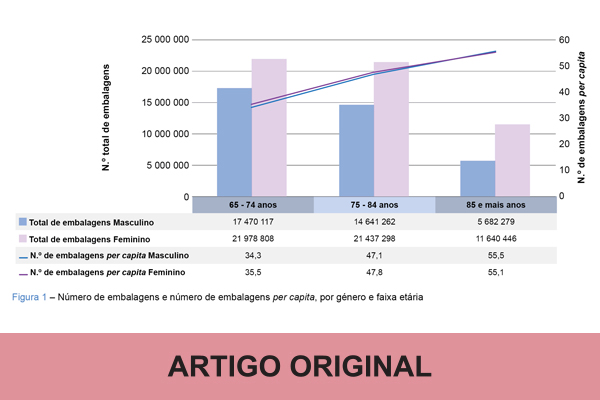SOCIAL MEDIA
Portuguese Medical Association's Scientific Journal

Introduction: Like in other countries, the age pyramid in Portugal has been changing considerably, with a substantial increase in the size of the older population and a significant reduction in the number of young people. With aging, co-occurrence of several conditions becomes frequent, often leading to the use of multiple medications (polypharmacy). Polypharmacy in the older population is particularly relevant considering the physiological changes of the ageing process, which increase the risk of drug interactions, poor adherence to treatment, and adverse drug reactions, especially in the oldest-old population (85 years or older). As the size of the older population is likely to increase significantly, it is important to characterize the pattern of medicines’ use by the elderly while also identifying cases of polypharmacy in order to obtain evidence that can be used to develop specific measures to tackle the high prevalence of use and its associated risks. To this end, the aim of this study was to characterize medication use by older individuals in Portugal.
Methods: Cross-sectional study with data from the National Health System’s Control and Monitoring Center on reimbursed medicines that were prescribed and dispensed to individuals aged 65 years or older in 2019 in all community pharmacies of the Portuguese mainland. We performed a demographic and geographic analysis of the data by international nonproprietary name and therapeutic group. The number of reimbursed packages and the number of reimbursed packages per capita were the metrics used (data from Instituto Nacional de Estatística).
Results: A higher consumption of medicines was observed in women, increasing with age, except in the oldest olds, in which the sex difference tended to shrink. Use per capita showed an opposite trend, with the oldest-old men surpassing the oldest-old women (mean reimbursed packages: 55.5 in men versus 55.1 in women). In women, consumption was led by cardiovascular medicines (31%), followed by central nervous system medications (30%) and antidiabetics (13%); in men, 37% of TOP 10 consumption was due to cardiovascular medications, antidiabetics (16%) and drugs for benign prostatic hypertrophy (14%).
Conclusion: In the elderly, there were sex differences in the pattern of medicines’ use, and there were also significant age-related differences in 2019. To the best of our knowledge, our study is the first nationwide analysis of reimbursed medicines’ consumption data in the elderly, which is essential to characterize the use of medicines in this age group in Portugal.